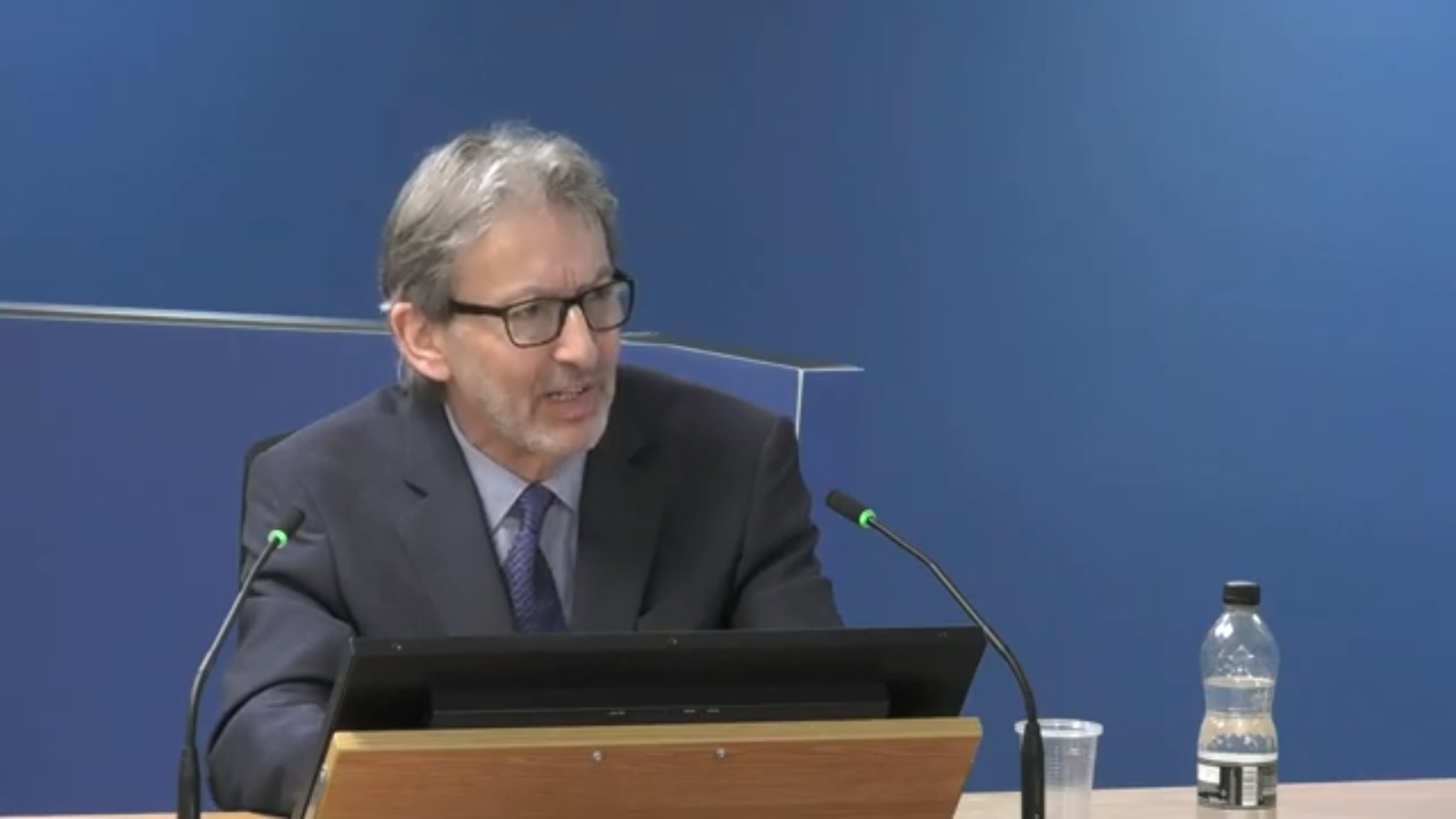
It was not “sensible” for combustible aluminium composite material (ACM) cladding to be used on a tall building like Grenfell Tower, even if it might have been interpreted that it was “allowed” under Building Regulations at the time, the Grenfell Tower Inquiry has heard.
Jonathan Sakula, who has over 30 years’ experience in the façade industry and 45 years in construction, appeared before the hearing yesterday, having been appointed as an expert witness on cladding in October 2020.
Prior to his appearance, Sakula produced a report answering a series of key questions regarding the cladding industry in the UK from January 2012 up until the fire at Grenfell occurred in June 2017. Sakula was asked to focus in particular on the cladding industry’s knowledge of the fire risks posed by ACM cladding with a polyethylene (PE) core in his report, which was produced in March this year.
Responding to Kate Grange QC about the nature of the work on Grenfell Tower, Sakula — a fellow of both the Institution of Structural Engineers and the Institution of Civil Engineers — said it was “relatively routine”. He added: “From a technical point of view, it wasn’t particularly unusual, what they were doing on the outside of the building. They were putting up rails and putting up panels and insulation inside, and so on. That’s been done quite a lot in Britain.”
International cladding fires
Sakula said while the industry in the UK prior to 2012 might not have been aware of the fire risks posed by ACM cladding on high-rise buildings, that began to change after a series of high-profile fires in the Middle East and Europe after 2012, including a blaze at the 40-storey Al Tayer Tower in Sharjah in the United Arab Emirates and then a fire at the 18-storey Mermoz Tower in Roubaix in France in May 2012.
In his report, he said: “I would not expect all practitioners in the cladding industry to have been aware of all of these at the time. Nevertheless, the ones that would, in my opinion, have been more widely known were the fires in the United Arab Emirates (UAE), particularly in Dubai in 2012−2016, because they were well covered in the news media and technical press at the time.”
In the hearing, he added: “I would have expected them [a reasonably competent contractor] to have been aware of the UAE fires. They might have been aware of some of the others, but I wouldn’t have expected that.”
Lack of clarity over regulations
Meanwhile, he also highlighted a lack of clarity over regulations in England governing the use of ACM cladding on high-rise buildings. He said that during the period he had been asked to consider between 2012 and 2017, the “time lag in relation to the lack of clarity on parts of ADB2 [Approved Document B] was getting unreasonable”.
Provided cladding panels had been tested to a standard known as Class 0, which examined the way the surface of a product such as cladding resisted the spread of flames, Approved Document B “allowed” their use.
In his report, Sakula said: “I consider that a reasonably competent cladding contractor or manufacturer would have been aware of the combustibility of PE−cored ACPs, particularly after the UAE fires. However, in my opinion they would nevertheless have deferred to the guidance given in ADB2. Therefore, while ADB2 section 12 remained unchanged, and was silent about the use of ACPs, a cladding contractor would have interpreted this that the use of ACPs was still allowed.”
But he went on: “I note, however, that ADB … is not itself the Building Regulations and that the 2010 Building Regulation B4 … itself states: ‘The external walls of the building shall adequately resist the spread of fire over the walls’.”
Concluding his report, Sakula said he considered the use of PE-cored ACM cladding for buildings over 18m in height to be “unwise” given their known combustibility. The report said: “In such circumstances, I consider that failure to consider adequately the combustibility of the materials would fall below the standard expected of a reasonably competent practitioner in the cladding industry. This would apply even more so to a situation where such materials were being proposed as a cost saving measure, where it would be essential to verify whether the cheaper product would perform adequately by comparison with the product for which it was being substituted.”
Commenting on his report in the hearing, Sakula said: “My view is that I just don’t think it was sensible to use these kind of ACM on a tall building, and I think what they should have done is thought: well, let’s look in more detail at fire retardant core variants of the ACMs, if we’re going to use ACMs.”
Grange asked: “Can we be clear, therefore, that a reasonably competent cladding contractor should have carefully considered whether ACM PE cladding panels were suitable for use on a high−rise residential building, given the combustibility of such panels and their propensity to propagate the spread of fire?”
Sakula replied: “Yes, and I would add to that, not only the cladding contractor’s responsibility, this issue, it’s all parties involved.” He agreed that this meant the architect, the main contractor, as well as the building control officer and cladding manufacturer.
The Inquiry continues.
Comments
Comments are closed.












How much is the bill for the legal profession so far?
What nonsense to say ‘even if it might have been allowed under Building Regulations at the time’, that cladding system did NOT comply with then current BRegs. As soon as the news came through, at the time of the fire, I knew what was happening and anyone with any knowledge of BRegs should have known too.